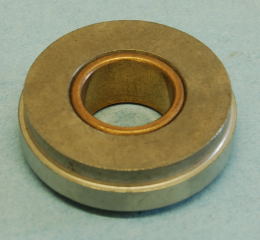Have someone step on the clutch, and see if a .030 feeler gauge will fit between fly and disc.
I will definitly check that tomorrow. I was wondering what would be a good way to check and see if the clutch was working properly. Very good info.
Have someone step on the clutch, and see if a .030 feeler gauge will fit between fly and disc.
Have someone step on the clutch, and see if a .030 feeler gauge will fit between fly and disc.
Sounds like something is causing to much drag on the input shaft.
By chance have you tried pushing in less and see if the problem changes?
Odd question I know, but I have a very specific reason for asking.
Try half way down and see if it's any better, then three quarters.
I was thinking the same thing about the drag on the input shaft. Cant try the clutch at the moment. Trans is on work bench.
Were the hubs wore pretty bad? I have seen them wore enough that the slider would not move freely and made it hard to shift. You said you rebuilt it maybe the synchronizers were not machined right and the taper is not slowing down the speed gear enough to get it into gear. Just a thought good luck.
May not be the problem but what about bell housing alignment?
Not ever been a problem for me on the stock stuff but the lake wood bell housing can be a real pain some times. Ok I'm done for now lol.
I would just hone the bushing it should be fine. Don't think that's enough to hurt you. Usually the stock stuff is pretty forgiving.


